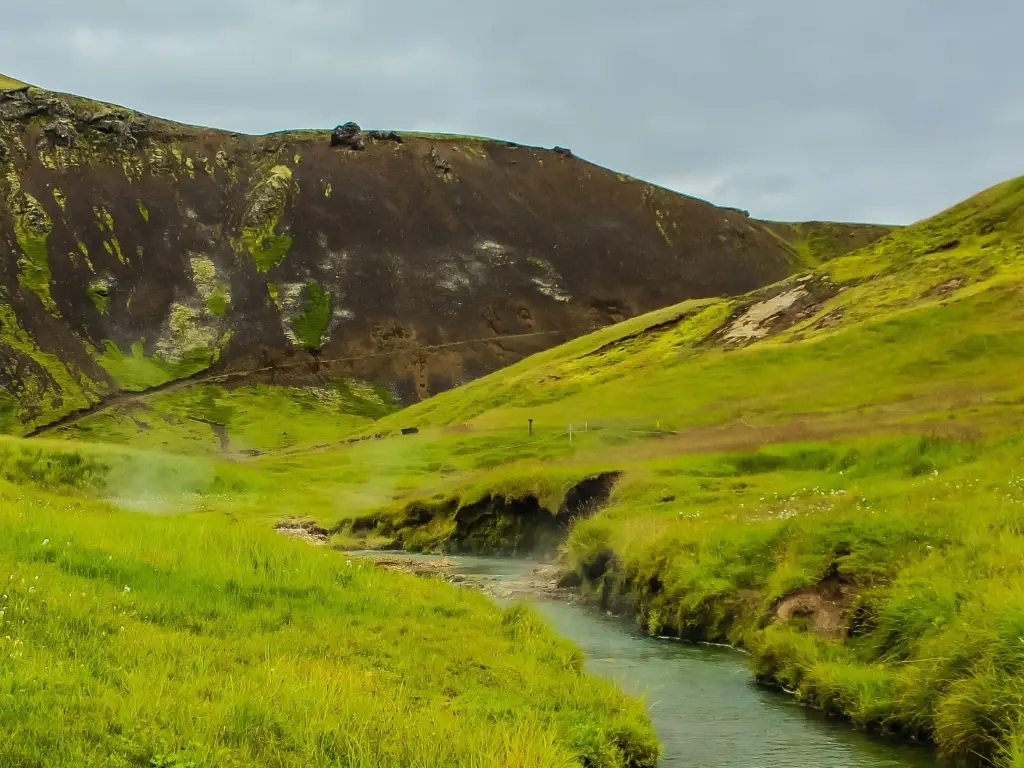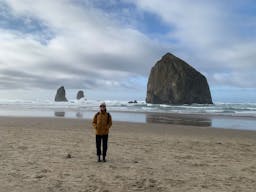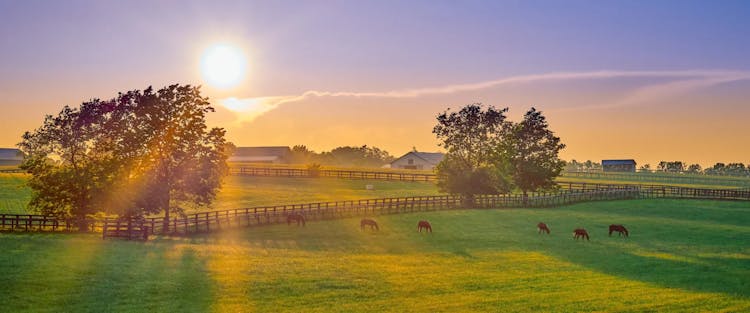
Reykjadalur Valley: The Icelandic Valley of Steaming Rivers
Steam rises from the water in Iceland’s Reykjadalur Valley, about a 30 mile–drive southeast from the capital of Reykjavík. After a few days in Iceland, you normally wouldn’t think twice about it, as the country has no shortage of vents sending plumes of steam into the sky. But rather than billowing from a hot spring or geyser, the steam in the valley rises from an entire river—and you can bathe in it.
Iceland, affectionately known as the Land of Fire and Ice, is where volcanoes and glaciers meld in a sort of mystical manner. And it is this very combination of fire and ice that powers the island nation. On a drive around the 820-mile-long Ring Road encircling the entire country, there are plenty of opportunities to see how Icelanders harness green energy for electricity and relaxation, whether you’re passing the ever-popular Blue Lagoon, a greenhouse heated by geothermal water, or a power plant with distinct steam stacks and an even more distinct rotten-egg odor.
Egginess aside, the geothermal energy here provides heat to about 85% of houses in Iceland. Reykjavík receives the majority of its energy from the Hengill volcanic area alone, which also heats the river flowing through Reykjadalur Valley, whose name conveniently translates to “steam valley.” Hengill—one of Iceland’s most prominent, active volcanoes—hasn’t erupted for about 2,000 years, yet it continues to feed a number of attractions throughout the south of Iceland, including the hot spring river.
Not too hot and not too cold, the river is a bathable mix of glacial runoff and volcanically-heated water. It’s accessible via a moderately difficult, four-mile (roundtrip), out-and-back hike through the valley starting in the town of Hveragerði. The hike is scenic, guiding you past Icelandic horses, waterfalls (either flowing or frozen depending on the season), and swaths of glacier- and lava-carved landscape.
After about an hour of walking, you’ll reach the southern end of a boardwalk, which runs the length of the hot spring river with different entry points into the steaming river. The kicker: Not all entry points are equal. The water is hottest upstream—closer to the source, the volcano—and cools down as you get farther south on the boardwalk. This allows you to choose your perfect bathing temperature.
A few things to remember before jumping in:
- The best areas to bathe vary by time of year, as the air temperature can affect the water temperature. The water typically hovers between 88°F-108°F.
- The most comfortable spots to bathe are near the rocky dams. This is where the water is deepest and usually warmest. The shallower areas tend to stay cooler.
- The hot and cold water doesn’t always blend perfectly as you walk farther north along the river. This can produce hot and cold pockets, which may make it difficult to stay in the water for long periods of time.
- Some pools of water in the region are too hot for swimming. If there’s a sign with a thermometer on it next to the pool, steer clear.
While the commercialized lagoons of Iceland offer lavish day-long visits, spa retreats, and gourmet delicacies served up at on-site restaurants, Reykjadalur Valley’s hot spring river offers a different kind of experience: the opportunity to dive into Iceland’s unique topography in its purest, steamiest form, as it winds its way from summit to sea.
Getting there
The nearest airport is KEF (Keflavík International Airport), located 28 miles from Hveragerði. Whether you’re visiting the hot spring river from the airport or Reykjavík, you can easily access the trailhead via Route 1 (Ring Road) and mapping to the Reykjadalur Gjaldskylda parking area.
Average Going flight price: $437 RT
See Going's cheap flights to Iceland
How to do it
- Best time to go: The hot river is best enjoyed in the summer and fall (June-October), as this allows for maximum daylight and the warmest air and water temperatures. To beat the crowds, you should plan to arrive at the trailhead between 8-9am, but given that Iceland’s days are extra long in the summer, you can also visit later in the evening.
- Cost: It is free to soak in the hot spring river; however, you will have to pay about $2 per hour to park at the trailhead.
- Safety considerations: Icelandic weather and terrain can be unpredictable any time of the year but especially in the winter months. Visiting the hot spring river is not recommended in the winter, as snow and ice can make the route difficult to navigate.
- Tips: Don’t forget to bring a swimsuit and towel. There are alcoves built into the boardwalk where you can change, but you’ll want to be quick—even at the height of summer, the boardwalk can be chilly for bare feet.
>> Join Going and get cheap flights and travel tips delivered right to your inbox.
More natural wonders around the world
Published October 10, 2023
Last updated December 19, 2023
Articles you might like
View AllTreat your travel to cheap flights
Most deals are 40-90% off normal prices with great itineraries from the best airlines. If it's not an amazing deal, we won't send it. Sign up for free to start getting flight alerts.




